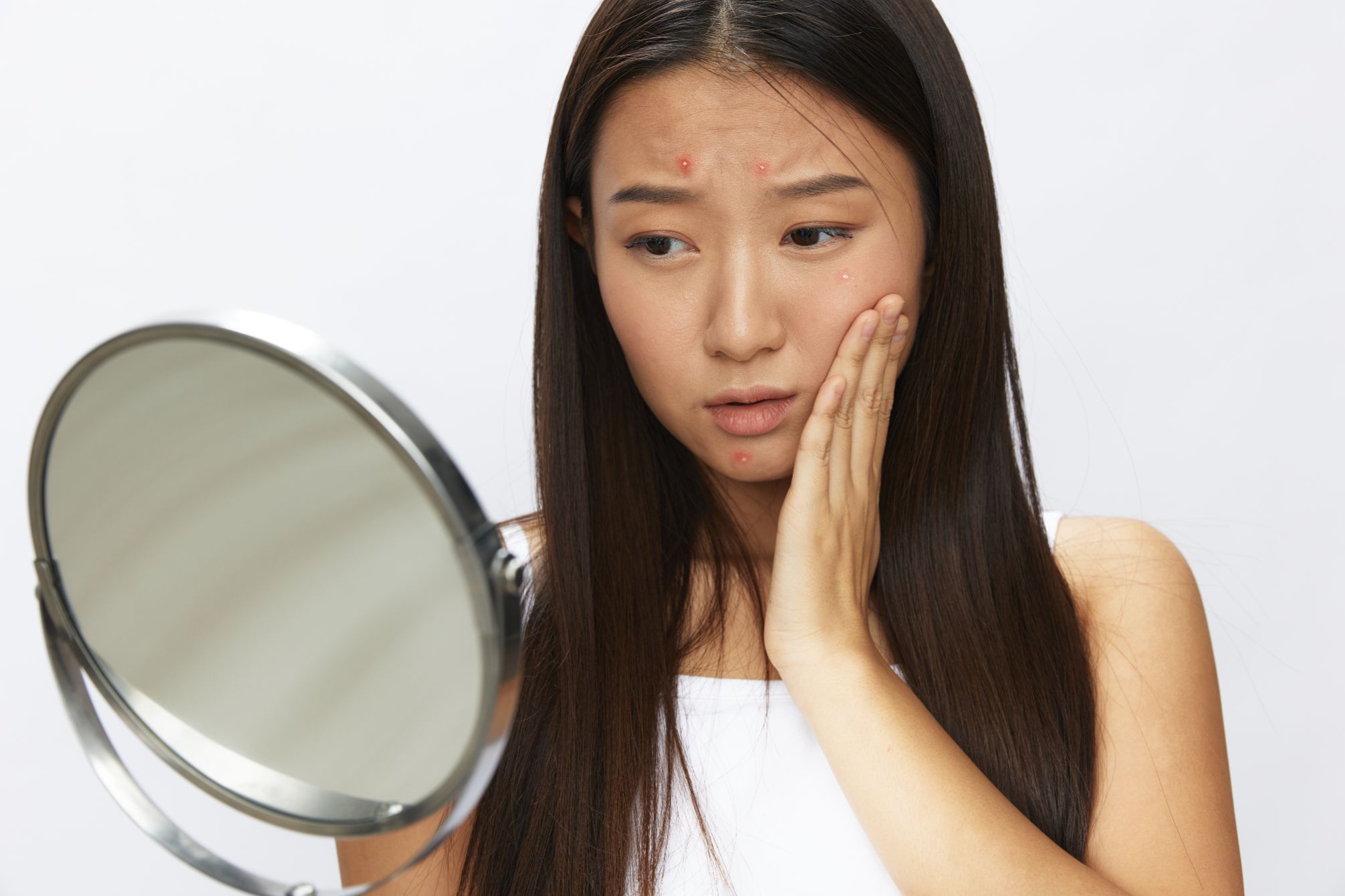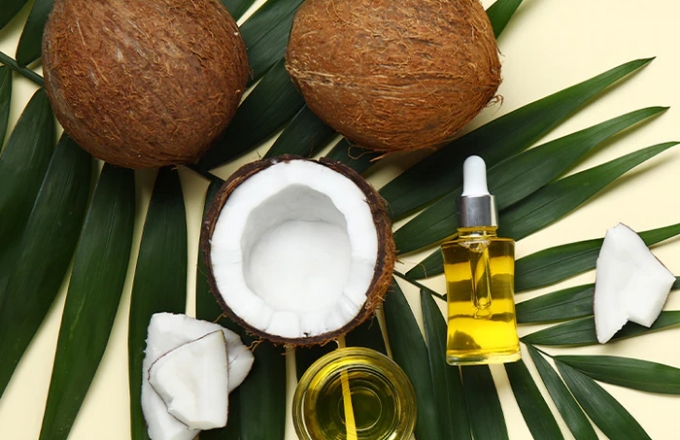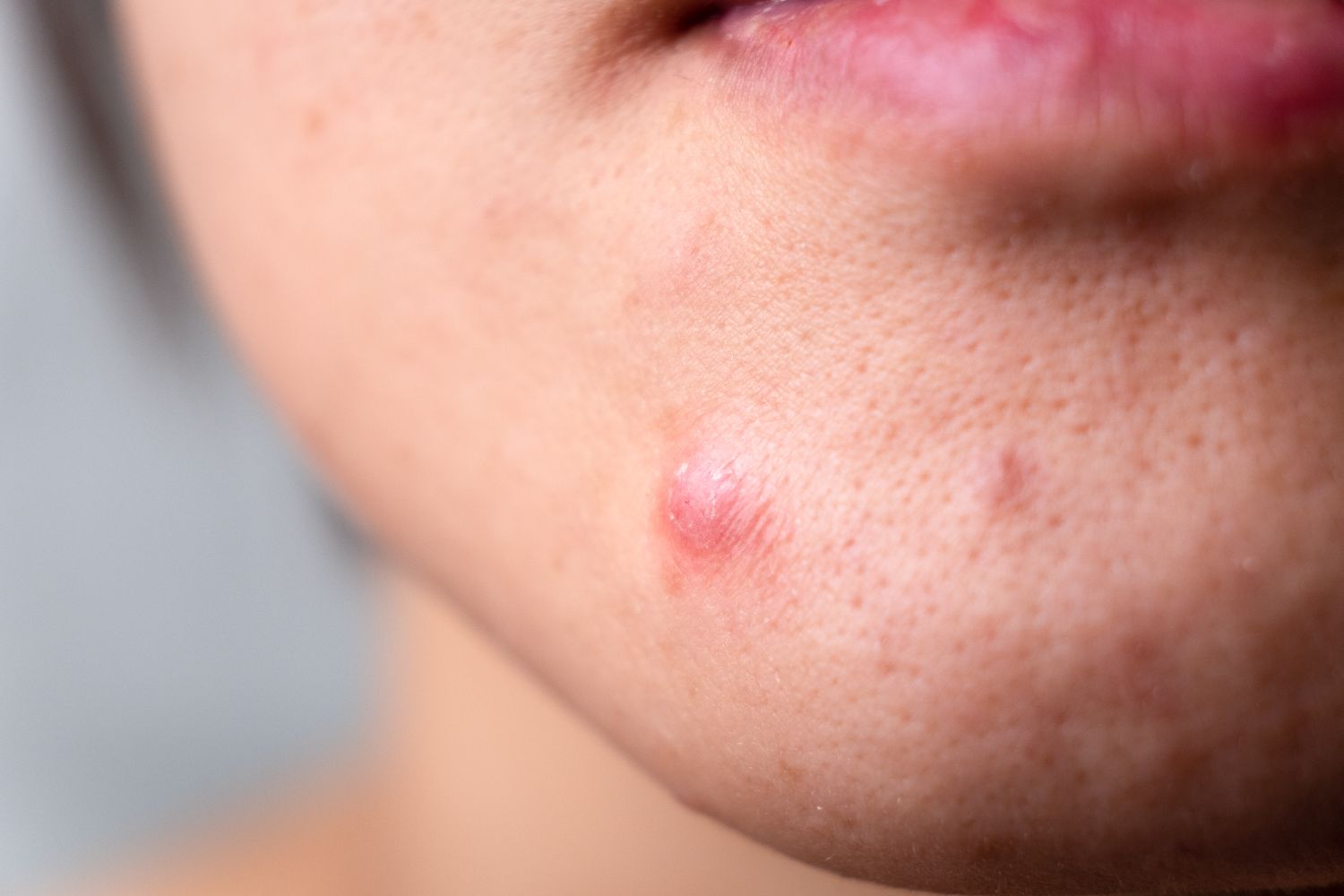Acne & Oily Skin
May 28, 2025
Pimples vs Acne: What Is the Difference and How to Treat Them

Some of the things we hate the most about our skin are acne and pimples. These two skin conditions are often used interchangeably, but they are not exactly the same thing. Acne and pimples have different characteristics and causes. Understanding the difference between acne and pimples is crucial for choosing the right treatment and skincare routine.
In this article, we’ll break down the differences between acne and pimples, how to treat them, and ultimately, how to unlock that radiant, blemish-free skin.
What are Acnes?
Acne is a chronic skin condition that primarily affects the hair follicles and oil glands (sebaceous glands). It is characterized by the appearance of various lesions, including whiteheads, blackheads, pimples, and cystics. Acne occurs when hair follicles become clogged with oil (sebum), dead skin cells, and bacteria.
What are Pimples?
Pimples occur when clogged pores become infected with bacteria, leading to the formation of inflamed lesions filled with pus or other material. Pimples are often what people refer to when they speak about their acne problems.
The Process of Acne and Pimple Formation
Both acne and pimples develop through a similar process driven by excess sebum, clogged pores, bacterial growth, and the body's inflammatory response.
- Excess Sebum and Clogged Pores
The process begins when the sebaceous glands produce too much sebum—a natural oil meant to hydrate and protect the skin. Hormonal fluctuations, stress, and other factors can trigger this overproduction. The surplus oil mixes with dead skin cells, creating a sticky combination that clogs the pores and forms plugs. These blockages manifest as whiteheads (closed pores) or blackheads (open pores oxidized by air exposure). - Bacterial Growth and Infection
Blocked pores create an ideal environment for Propionibacterium acnes, a type of bacteria naturally present on the skin, to multiply rapidly. As the bacteria proliferate within the clogged pores, they cause irritation and lead to infection, worsening the skin condition. - Inflammatory Response
In response to the infection, the immune system triggers inflammation, resulting in redness, swelling, tenderness, and sometimes pus formation—a mix of sebum, dead cells, and immune cells. This inflammatory reaction is what gives pimples and more severe acne lesions their characteristic "angry" appearance.
Although acne is often a chronic condition involving multiple breakouts, and pimples are more localized inflammation, the root causes and formation processes are fundamentally the same.
Summary: Pimples vs Acnes
Pimples are a specific type of acne lesion characterized by inflammation, while acne is a general term for various skin conditions involving clogged pores. Both arise from similar underlying mechanisms, including clogged pores, bacterial growth, and inflammation.
While both pimples and acne share common causes like excess sebum and clogged pores, pimples are typically a result of localized inflammation and hormonal changes. In contrast, acne is a more complex, chronic condition influenced by a broader range of factors, including genetics and lifestyle.
Types of Pimples
Pimples come in various forms, each differing in appearance, severity, and underlying cause.
Whiteheads and Blackheads
- Whiteheads: These are non-inflammatory types of acne, appearing as small, white bumps. Whiteheads develop when clogged pores remain closed at the surface.
- Blackheads: Similar to whiteheads, blackheads are also non-inflammatory comedones. However, they appear dark because the pore remains open, allowing trapped oil and dead skin cells to oxidize upon contact with air.
Papules and Pustules
- Papules: These are small, inflamed red bumps that don’t contain pus. Papules form due to blocked pores combined with bacterial infections that trigger inflammation.
- Pustules: Pustules are similar to papules but contain pus, giving them a white or yellow center surrounded by redness.
Nodules and Cystics
- Nodules: Nodules are larger, hard, painful pimples that develop deep within the skin. These severe acne lesions often persist for long periods and can lead to scarring.
- Cystics: The most severe type of pimple, cystics are deep, pus-filled lesions that are often painful and swollen. Like nodules, cystics can cause lasting scars if not addressed properly.
Effective Strategies to Manage Pimples and Acne
.jpg)
To sum up, to treat your acne condition, which may prevent pimple problems, a dedicated skincare routine combined with targeted treatment options is the key. Here are some of them:
Daily Skincare Routine
Maintaining a consistent skincare routine is non-negotiable. DermaAngel offers a range of skincare products that can help manage acne-prone skin.
- Gentle Cleanser: Use a mild, non-comedogenic cleanser to remove excess oil and dead skin cells.
- Exfoliation: Use a gentle chemical exfoliant—like AHAs or BHAs—to help unclog pores, smooth texture, and support skin renewal. Regular exfoliation can prevent breakouts before they start.
- Moisturizer: Apply a lightweight, oil-free moisturizer to keep the skin hydrated.
- Sunscreen: Protect your skin from UV damage by using a broad-spectrum sunscreen.
Treatment Options
Depending on the severity of the acne, different treatment options can be considered.
- Topical Products: Use over-the-counter topical treatments containing ingredients like salicylic acid or benzoyl peroxide.
- Pimple Patches: DermaAngel's acne patch provides targeted treatment for pimples, helping to reduce redness and promote healing. These patches use a hydrocolloid dressing to absorb excess residue after an acne breakout, helping your skin heal and minimizing the chance of scars.
- Oral Medications: Prescription medications like antibiotics or hormonal treatments may be necessary for severe acne.
- Dermatological Procedures: Treatments such as laser therapy or light therapy can help manage severe acne and reduce scarring.
Prevention Tips
Preventing acne and pimples also involves maintaining a healthy lifestyle and appropriate skincare practices.
- Prioritize Consistent Sleep
Getting enough sleep helps regulate hormones, reduces stress, and supports your body’s natural repair processes. Aim for seven to eight hours of quality sleep each night to give your skin the rest it needs. - Manage Stress Effectively
Stress can take a toll on your skin, often triggering or worsening acne. Incorporate relaxation techniques such as meditation, deep breathing exercises, or even simple daily walks to help keep your stress levels in check. - Choose Appropriate Skincare Products
Look for skincare labeled non-comedogenic, oil-free, and fragrance-free to make sure your routine works with your skin and not against it. These products are less likely to clog pores and cause breakouts, all while protecting sensitive skin. - Stick to a Simple, Consistent Routine
An effective skincare routine doesn’t need to be a 10-step process. Focus on the basics: gentle cleansing, hydration, and sun protection. A simple routine that you follow consistently is often more beneficial than trying too many products or treatments.
Discover the Secret to Radiant, Balanced Skin
Differentiating pimples vs acne is crucial to understanding how to properly care for your skin. While there are many factors that can contribute to acne breakouts, such as genetics and hormonal changes, maintaining a proper skincare routine can greatly improve the overall health of your skin. By following these simple tips, you can keep your skin healthy and glowing. So, whether you're looking for a reliable pimple patch or everyday skincare essentials, take the first step toward confidence today! Explore DermaAngel Solutions.





